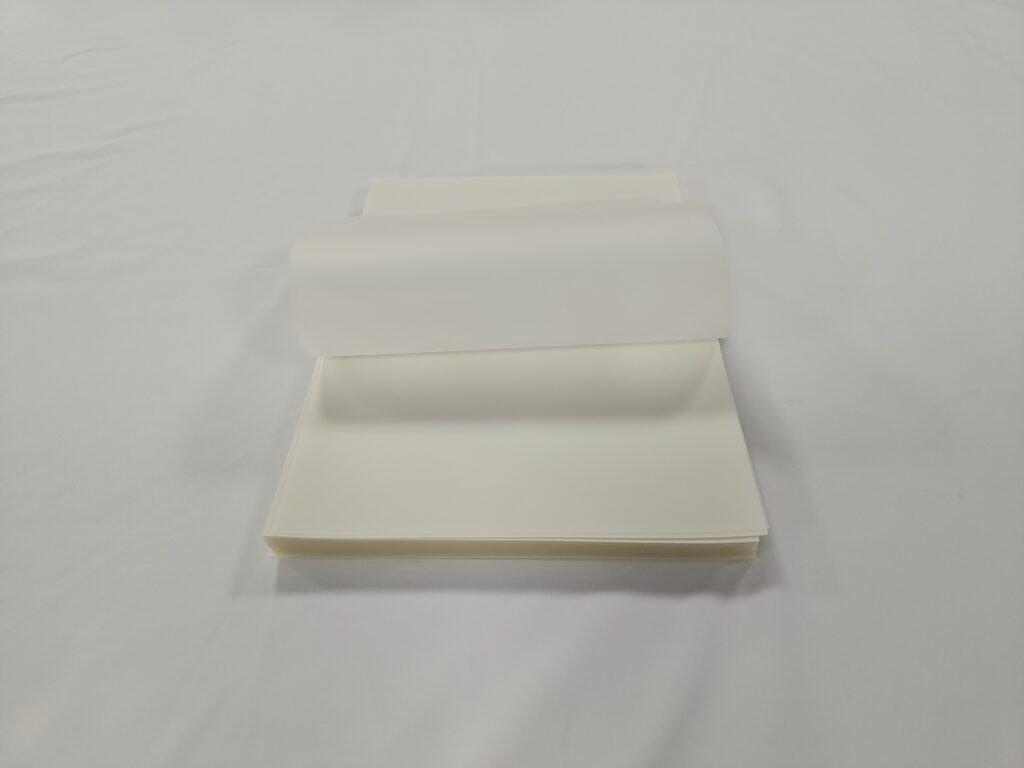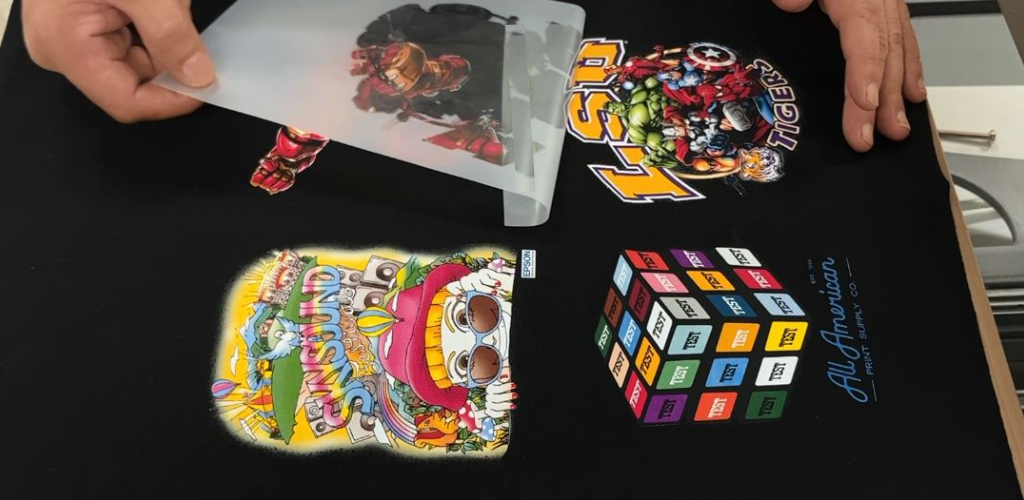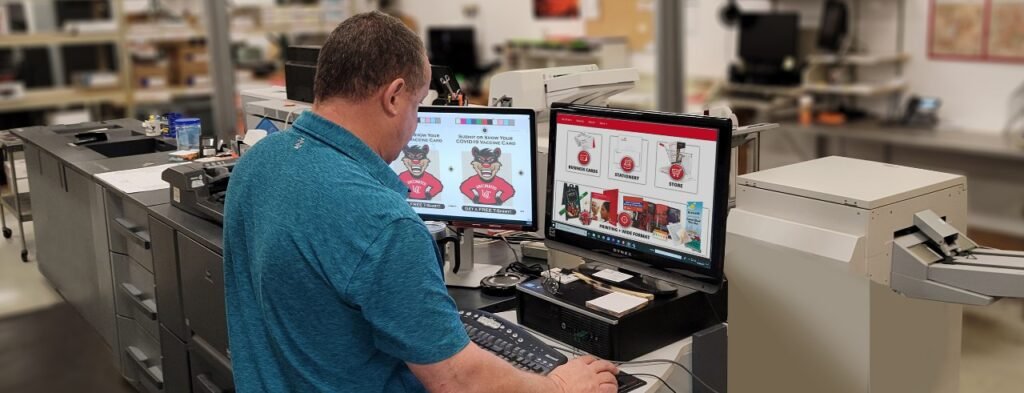Confirm the quality of DTF PET film before purchase
To ensure the quality of DTF film before purchase, the best approach is an on-site inspection. Seeing and touching the film firsthand provides the most reliable assessment. Online purchases, no matter how detailed the descriptions, lack the tangible quality assurance of a physical examination.
If a pre-order sample service is available, it’s best to take advantage of it. While you won’t be able to see or touch the final product, it still gives you a good idea of the print quality beforehand.

When buying film on-site, consider these factors to identify potential issues:
Ask the person about the knowledge
Before asking the supplier any questions, it’s crucial to have a basic understanding of the product yourself. For those in the printing industry, this foundational knowledge should already be present. Use this knowledge to formulate your questions, observe how the supplier responds.
If your understanding of this transfer film surpasses the supplier’s, proceed with caution before purchasing. Conversely, if the supplier’s expertise offers you new insights, that’s a positive sign. Even without having used the product, a knowledgeable supplier demonstrates a greater potential for effective after-sales support.
Conducting a print test
You need to be aware of these issues when performing print tests on-site:
- Whether there is any “oiling” of the film after the ink is printed on the film and the powder is spread on it.
- Whether the ink “edges” off the film and whether the ink bleeds off the edges.
- Whether the film adsorbs the hot-melt powder in areas where there is no ink.
- Observe the appearance of the film after hot press transfer, whether the yellowing is serious.
- Observe whether the film is easy to peel off and whether there is any ink residue on the surface of the substrate.
- Observe the slight differences in the color of the printed matter, such as off-color and completeness.
The issues mentioned above are all related to the quality of the film, but it’s important to note that they aren’t necessarily caused by PET film defects.
During actual print testing, the printer, ink, PET film, powder, and heat press all need to be correctly configured.
In short, the more you know about the realities of the situation before you buy, the better off you’ll be!
Start with a small amount
If you’re still hesitant after trying the above two methods, I suggest purchasing a small quantity of film for testing. This hands-on approach will help you identify any issues more easily, and the cost of a small batch is manageable.
You can choose the DTF PET film sold in the market by piece, a box of 50 or 100 sheets will be more convenient to test.
Determining quality when using DTF PET film
Most suppliers won’t allow extensive print testing on-site, leaving you with the option of buying a small sample for your own evaluation. Their testing uses their calibrated equipment. Testing the film yourself allows you to assess its quality based on your specific needs.
Try various print settings
While you can see professional printing tests on-site, they won’t accommodate your non-standard customizations.
Therefore, you can gradually adjust the printing settings to see how well the film meets your needs.
If your current business is not large enough to make wide-ranging adjustments to your printing, try increasing the amount of ink or powder used, or raising the baking or transfer temperature (within acceptable deviations).

Separate test for printing session
There is a quality gap between films from different suppliers, and this is also true for other DTF consumables related to DTF printing. Pre-purchase print tests typically use standardized inks and powders. However, if your actual printing uses supplies from different sources, you’ll need to consider the specifics of each printing step.
In this section, you need to determine the compatibility of the ink or powder with the film. Some inks don’t print well on film, while some powders may have a higher melting point than film (generally the melting point of the powder should be lower than the film).
Try switching out a few more brands of ink and powder to test. Usually supplies purchased at the same place will be more compatible.

Find reviews about DTF PET film
After the above tests on film before purchase and during use, you will have some experience in determining the quality of film. But that’s not enough, the next thing you need to do is to look for some reviews related to PET films. Regardless of the brand of film, you can further determine the quality of the film you buy by observing the problems others have encountered and combining it with your own practices.
Check the comments sections of different stores
Generally, merchants who are confident in their merchandise are shy about hiding the more negative customer reviews of their products. And sometimes these negative reviews are rewarding for us, maybe it happened not so long ago!
When you don’t have the means to judge the quality of a PET Film in depth, the problems other people actually encounter will open up new ideas for you. There are only a few steps in the entire DTF printing process, and there are usually not many issues related to the quality of the film, but mostly details that are relevant and easily overlooked.
Check out some forums discussing PET film
There are forums where information about DTF film is discussed, for example this one, click here(which doesn’t explicitly talk about the quality of the film, but offers ways to buy the film at a low price).
Finding information about film quality on forums requires you to relate it to areas involving DTF printing. Discussions about quality issues on forums tend to be more straightforward, and you might find answers to various printing problems there.
Traditional DTF PET film testing methods
Methods are the result of experience, so it is also vital to understand traditional methods of testing thin films.
Hot pressing test
Heat press according to matched heat press conditions (correct transfer temperature, correct substrate material) on suitable heat press transfer equipment. After successful transfer, the film is peeled off and is considered to have passed as long as the film does not leave ink stains (ink stains with multiple ink residues on the film). The film is divided into hot and cold peeling, the two peeling methods are not the same, this point should also be taken into account.
Transfer surface adhesion test
Transferred products can be tested by “sticking and pulling” the patterned surface with adhesive tape (please try about five times), and if the adhesive force of the tape is not strong enough to make the pattern “fall off”, the product will be recognized as acceptable.
Cleaning test
Repeatedly wash the products with transfer patterns (usually fabric) to see if the product surface will appear discoloration, fading, texture shedding. Cleaning three to five times without these problems, that is, qualified.









